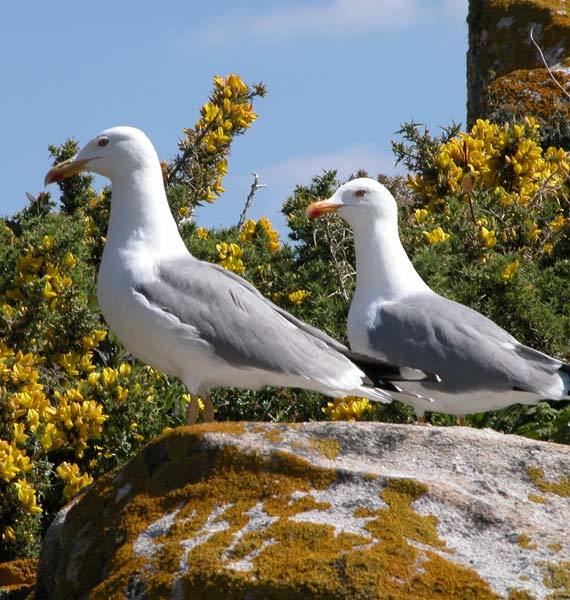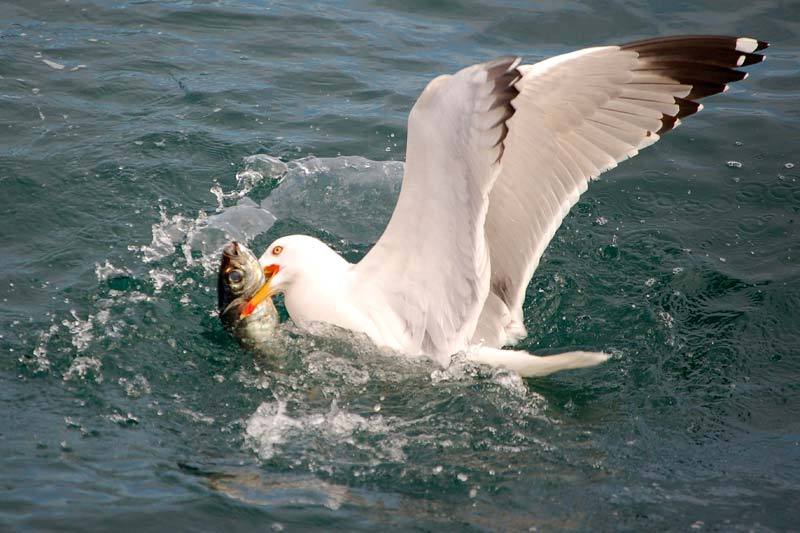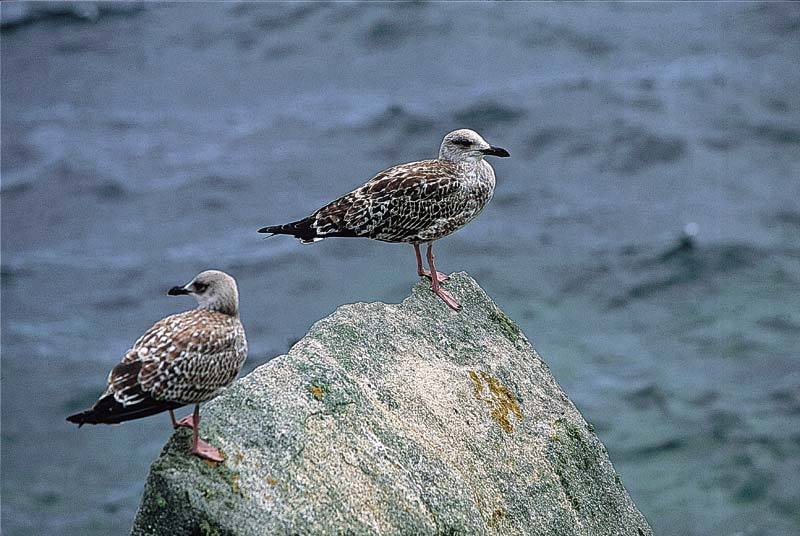This seabird is the most abundant and easy to see from the winged wildlife of the park. Sedentary, it stays all year on the islands with colonies of international importance, with about 22.000 breeding pairs. It measures about 55 cm, with the plumage of the sexes alike.
Opportunistic, not very specialized, robust and strong beaks, the main difference of the adult ones is their white plumage except for the top of the wings and back, which is silver grey, black feather tips, whereas young birds are brown.
The beak of adults is yellow with a red spot on the bottom, where the chickens ask for food. These seabirds do this by regurgitating the food. Both sexes take turns to incubate the eggs and feed the young birds.
The breeding period is from April to early August, they lay 2/3 eggs. Nests on the ground, among blocks of stone or in the low vegetation of the cliff.
Brown eggs that are incubated for about 30 days, after that chicken is born, already walking near the nest a few hours after being born. They will complete their growth in a month and a half and will fly after 6 weeks.
The immature eggs of the first year are brown but in the second year they show a clear ash colour on the back. In the third, the youth acquire its characteristic colour. Between the third and fifth year of life they become breeding adults. Red eye ring and yellow legs.


